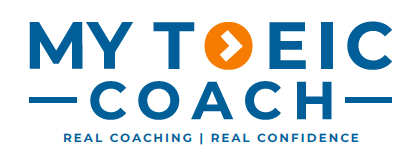🎯 What Is a Perfect Score on TOEIC Listening?
Understand the System — Then Train Smarter
A perfect TOEIC Listening score is 495 points — but here’s the truth:
You don’t need to understand everything.
You don’t need to get every single question right.
And you definitely don’t need to “listen for hours every day” to reach 495.
What you do need is:
🧠 Smart habits.
🎯 Focused training.
📈 Repeatable performance.
🧩 What TOEIC Listening Is Really Testing
People often think TOEIC Listening is just about general English comprehension.
But high scorers know: it’s a reaction test.
You're judged on how quickly and accurately you catch keywords, eliminate traps, and follow mini-conversations under time pressure.
It’s closer to sport than language study.
That’s why MTC’s listening strategies focus not just on “hearing,” but on training the brain to listen with precision.
🔍 One Game-Changing Practice for Beginners
🎧 Micro-Dictation Repeats
What to do:
Choose a short English sentence (5–10 seconds) from a TOEIC-style audio clip.
Play it once. Try to write down exactly what you heard.
Rewind. Play again. Check and correct your answer.
Repeat until you can write it down perfectly — and say it out loud confidently.
Tools to use:
Apps like AudioStretch, Music Speed Changer, or SmartPlayer (iOS/Android) let you slow the audio down to match your level.
Most allow loop/repeat and speed control — even by words-per-minute.
Why it works:
Trains sound-to-word recognition, especially for connected speech.
Builds confidence through visible progress.
Forces active focus — no zoning out.
How to level up:
Once you can transcribe slowly, increase speed little by little.
Eventually try dictation without pausing — or say it back in real time (shadowing light).
🔍 For Advanced Listeners: “Visual Mapping”
🗺️ Turn Listening into a Picture
What to do:
Pick a Part 3 or 4 audio clip (short conversation or talk).
Before pressing play, preview the questions (just like on the test).
While listening, draw a simple map, timeline, or diagram:
Who is talking?
What do they want?
What happens first / next / last?
No grammar. No full sentences. Just quick visuals — like a detective sketch.
Why it works:
Sharpens ability to track structure, not just words.
Helps avoid the trap of remembering the wrong details.
Builds memory hooks to find answers faster.
How to level up:
Start with paper. Later, do it mentally — just asking yourself,
“What’s the situation?” before and during each talk.
💬 Final Thought
Most learners just “listen more.” High scorers train smarter.
You don’t need more input.
You need more outcome from each minute you train.
And we’ve got dozens more of these breakthrough activities.
Want to Learn More?
Our blog is full of practical strategies that help test-takers like you build better habits, overcome common blocks, and improve TOEIC scores through smarter, easier methods. Try our free TOEIC Block quiz now!
